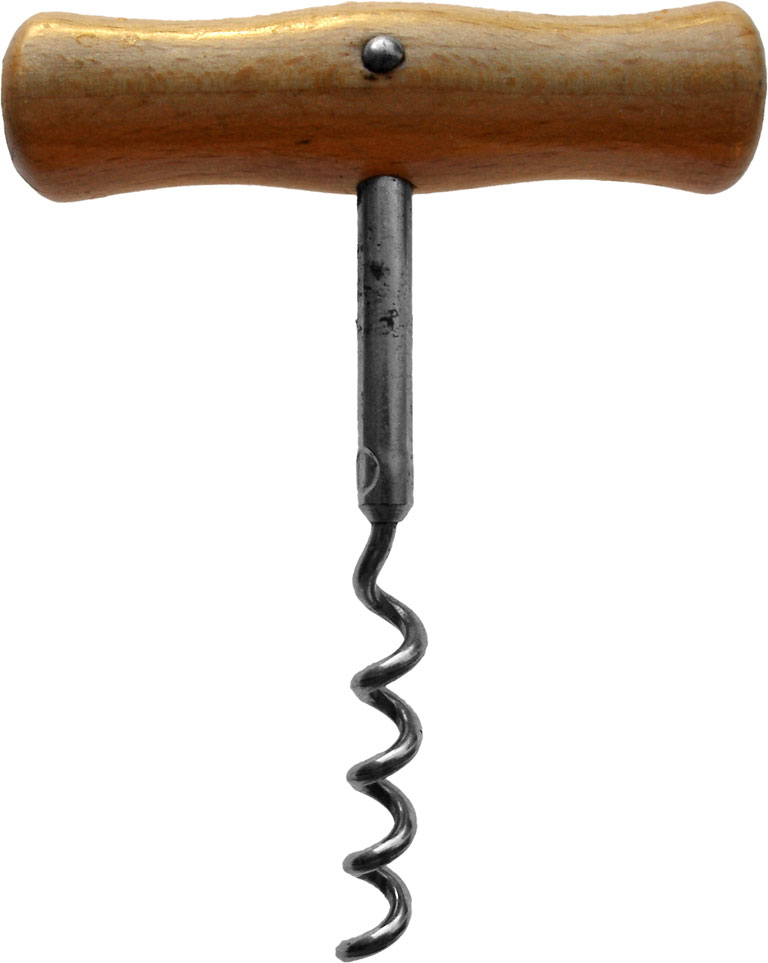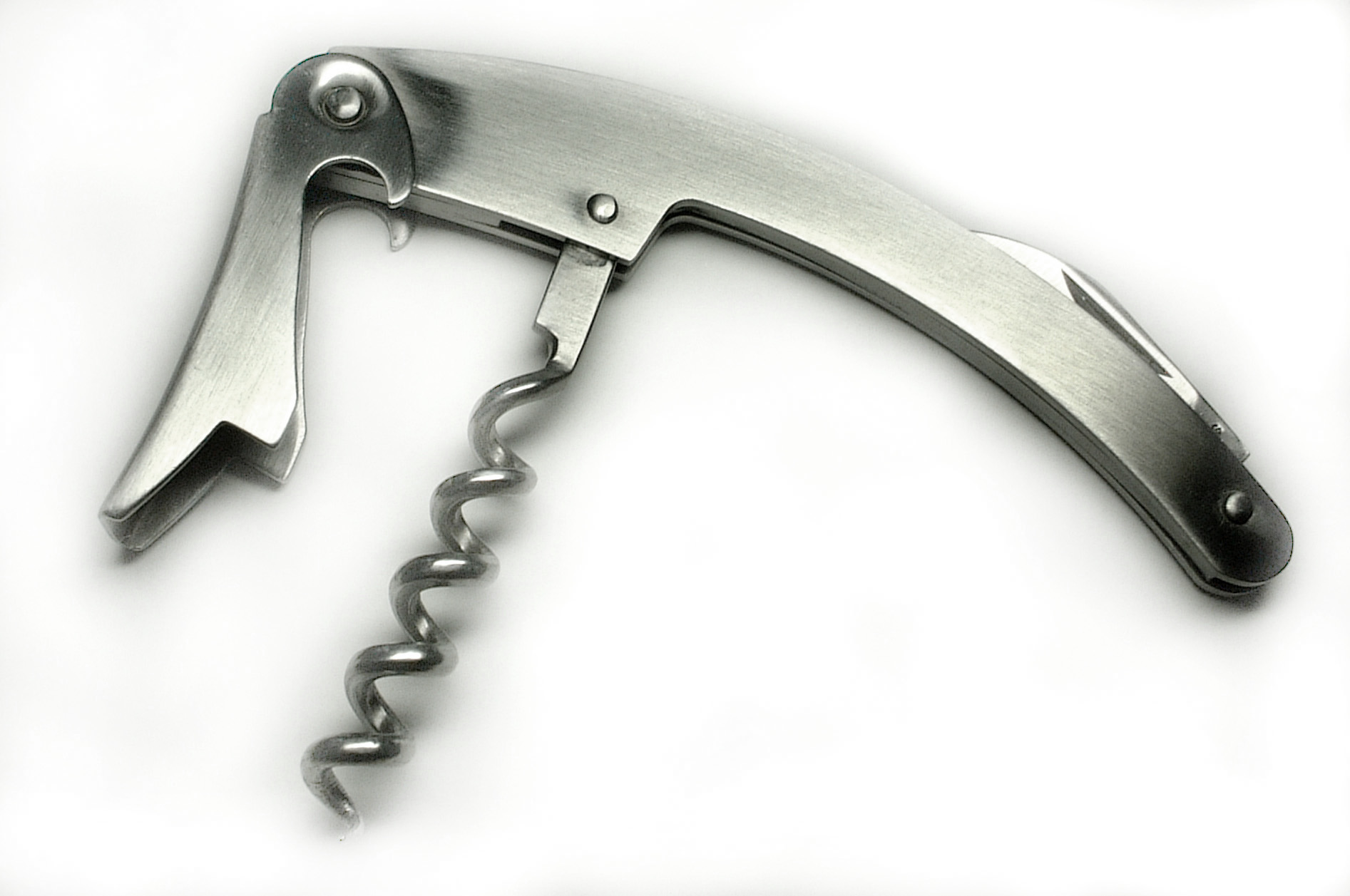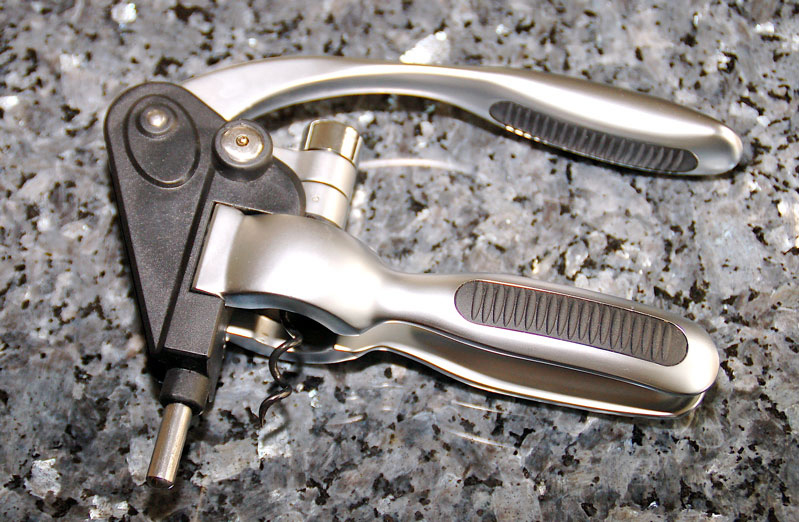Wine is good. A lot of people enjoy wine. But how many know how to properly open a bottle? This thought occurred to me while I was attending a function hosted by a friend of a friend. During this great social event we sampled a great many wines from different countries. As more and more bottles were opened it became very apparent that our gracious host had no idea how to properly open a bottle of wine. Not wanting to be rude I kept my mouth shut and at the end of the day the bottles were opened and we were able to enjoy the wine. But I was still amazed at the lack of this simple knowledge.
Before we get into the nuts and bolts of how we have to review hardware. Nowadays there is a multiplicity of options to get your bottle open. The basic corkscrew is just a piece of metal twisted in a helix fashion (known as the worm) fixed to a handle.
Next we have the wing corkscrew. It is also known as the butterfly or angel corkscrew. The name is due to the dual levers that resemble a pair of wings.
A more complicated wine opening apparatus is known as the sommelier knife, waiter's friend, or wine key. This corkscrew resembles a small pocket knife with the worm being folded into the handle when not in use. The wine key also has a metal arm that folds to cover the worm and serves as a lever when opening the bottle.
The last device I will be discussing is a lever or rabbit corkscrew. This device uses a pair of handles which are used to grip the neck of the bottle, and a lever which is simply pressed down to twist the screw into the cork, then lifted to extract the cork.
First lets take a brief look at the anatomy of a bottle. The bottle consists of a neck, shoulder, body, and the heel or punt. The parts we are concerned with are from the neck up. The neck is narrower than the rest of the bottle so it may hold the stopper, often known as a cork due to cork being the primary material used to make the stopper in the past. The opening is also called the finish and often has a slightly wider ring known as the collar. The collar is an important part to opening a bottle of wine.
The first step to opening a bottle of wine, no matter which device you use is to remove the foil covering the neck. More specifically it is only necessary to remove the part covering the finish, or just from the collar up. Completely removing this foil allows the wine to flow easily from the finish of your bottle. The best way to remove the foil is to simply use a run a small knife around the bottle at the tip of the collar. This will score the foil so that it may be peeled off. A wine key more often than not has a small blade attached to it for this purpose.
 |
| This model has two small teeth imbedded in the body. |
Once the foil has been removed it is time to extract the stopper. The basic corkscrew requires that the user grips the handle and screws the metal point into the stopper then use brute strength to pull out the stopper. The wing corkscrew facilitates this by using a mechanical means to remove the stopper. As a person screws the worm into the stopper, the levers, or wings, lift up due to the dual gears. Once the worm is fully inserted the user simply needs to pull down the levers and the stopper will lift out of the bottle. The gadget that is probably the easiest, fastest, but also the most cumbersome and expensive is the lever corkscrew. To use this device a person simply need to place the worm over the stopper, lower the lever and then lift. The corkscrew does the rest.
The device that requires the most skill to use, but which I consider to be the most elegant, is the wine key. It is a nuanced mechanism that combines form and function. It is small enough that it can be carried in a pocket. That is why is also known as a waiter's friend, since waiters will carry one on their person with ease. Its design is simple enough that it can be made inexpensively. The "key" is knowing how to use one. The truth is that it is really not that hard once you know what you are doing.
After the foil has been removed the first step is to open the key so that it resembles a basic corkscrew.
Next screw the worm into the stopper until it is firmly embedded in the stopper.
This is where a great many people go wrong. Once the helix is in there, most people would just pull on the wine key as if it were just a basic corkscrew. Buy doing this they are eliminating the advantages of the wine key. No, the next step is to tilt the body of the wine key so that the metal tab lines up with the collar of the bottle. If the bottle happens to lack a collar, it might be possible to align the tab with the opening.
Now use the metal tab as a lever to pull up the stopper. This is done by lifting on the opposite side of the wine key. If necessary use both hands: one to apply the levering action and the other to hold the metal tab in place.
The cork should clear the opening, but if it does not it should be far enough out of the bottle that it can easily be pulled out the rest of the way.
Now that you have your bottle open the next step, which is the easiest, is to simply enjoy your libations!













No comments:
Post a Comment